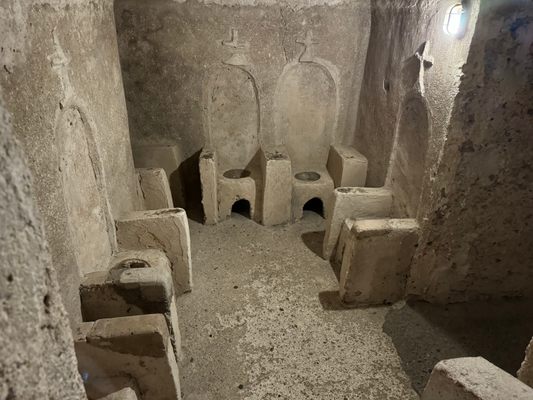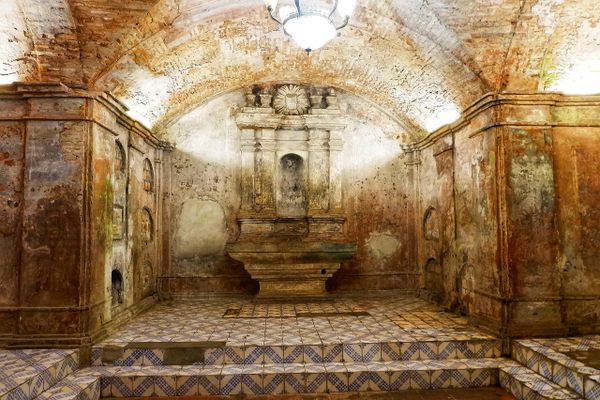About
The Aragonese Castle of Ischia is already unique in itself, standing on a tidal volcanic islet connected to the main island of Ischia only by a causeway. But one of the many rooms inside the castle has a particular history worthy of a horror movie.
The origin of the islet dates back to the 5th century BC, but the castle we see today was constructed starting in 1441 by King Alfonso V of Aragon, who also built the bridge between the small rock to Ischia. Between the 16th and 18th centuries, almost 2,000 families lived here because it was the only place protected against pirates, and the castle saw many different owners and purposes over the ages.
In the 17th century, it became home to a convent of an order of nuns called the Poor Clares. In the underground cemetery of the Poor Clares, you can see the remains of a gruesome tradition. When a nun died, her lifeless body was placed in a sitting position on a stone chair with a hole in it and left to mummify. The bodies slowly decomposed, and the liquids were collected in special vessels located under the seats. The skeletons were later collected in an ossuary.
Every day, the still-living nuns visited the death chairs to pray and meditate on death and the ephemeral earthly life. Spending several hours in such an unhealthy place, the nuns often contracted serious illnesses, which in some cases were deadly.
Aragonese Castle was shelled during the Napoleonic Wars and abandoned soon after, before briefly becoming a prison until 1860. The stone seats of Poor Clares Cemetery can still be visited on stop #6 when exploring Aragonese Castle.
Related Tags
Flavors of Italy: Roman Carbonara, Florentine Steak & Venetian Cocktails
Savor local cuisine across Rome, Florence & Venice.
Book NowCommunity Contributors
Added By
Published
May 3, 2018

























